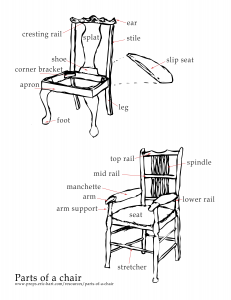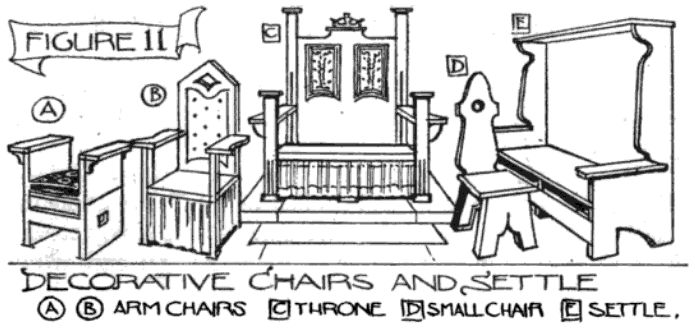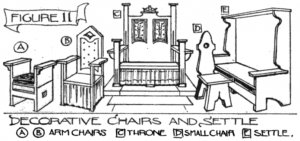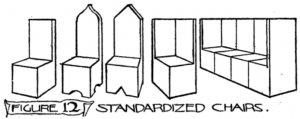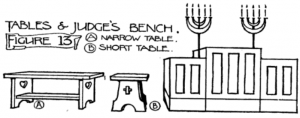Learning the names and terms for parts of objects is important in developing your shared vocabulary for easier communication. If a designer asks you to “make the splat wider”, you don’t want to waste your time trying to widen a drop of paint.
For chairs, this was a little tricky trying to distill down all the general parts. Not all chairs have all the parts. Some parts are only specific to certain styles or time periods. Various people refer to similar parts by different names; in some contexts, they can be synonyms, while in others, they might have slightly different definitions. I’ve tried to exclude terminology which describes styles of parts. So while I defined a “leg”, I haven’t included a “cabriole leg”.
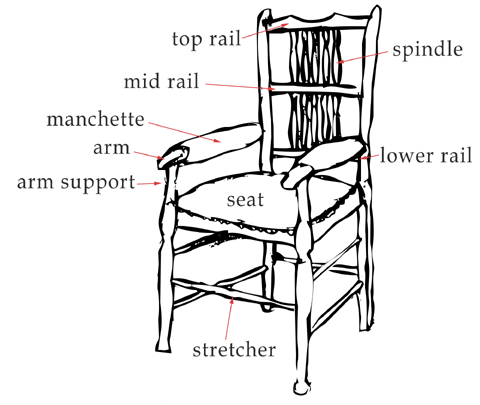
You can refer to the drawing above as well as the one below when looking at the definitions. At the end of today’s post, I’ve included a full-size drawing of both diagrams together at a higher resolution so you can print it out and hang it up. Have fun!
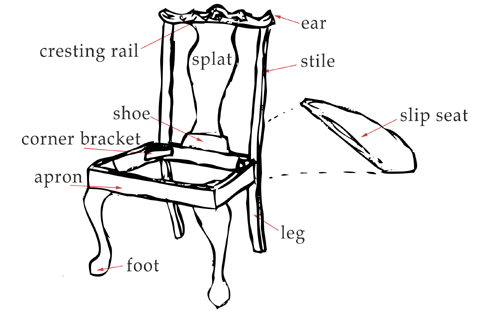
- apron – the strips that run between the legs and connects to the surface (seat)
- arm or armrest – part that supports your elbow and forearm
- arm support – generalized term for the upright piece which supports the arm
- back rail – rails specific to the seat back
- back upright – synonym for “stile”
- corner bracket – item which connects two members for added support and structure
- cresting – ornamental topping, usually set in the center of the top of a chair-back
- cresting rail – rail which contains the cresting, aka top rail
- ear – small projecting member or part of a piece or structure, either decorative or structural
- foot – bottom of the leg
- headpiece – another word for “top rail” or “headrest”. With cresting, can be called “cresting rail”
- leg – support for the chair
- lower rail – lowermost rail of the seat back
- manchette (arm pad) – upholstered patch or cushion on an armrest
- mid rail – rail close to the vertical center of the seat back
- rail – horizontal bar (of the back)
- seat – the piece you set your bum on
- seat back – general term encompassing the whole back of a chair, from the seat on up
- seat rail – a synonym for the apron, or a single piece of the apron
- shoe – a piece that sits on the back seat rail and holds the bottom of the splat, allowing easy replacement of a broken splat without disassembling the whole chair
- skirt – band of fabric that hangs free from the bottom of an upholstered cushion. Sometimes used as a synonym for “apron”
- slip seat – a seat which is easily removable to facilitate re-upholstery
- spindle – a cylindrically symmetric shaft
- splat – a vertical central element of the chair back
- stile – outside vertical framing member (of the back)
- stretcher – horizontal support element joining the legs
- top rail – uppermost rail of the seat back
- upholstered back – a padded back covered in fabric
- upholstered seat – a padded seat covered in fabric
- upright – vertical members of a chair back
